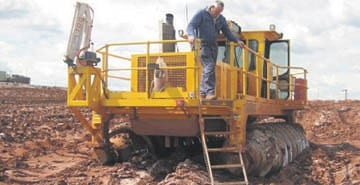
However, this claim has been emphatically denied by Aughinish Alumina.
Dr. Edward Horgan, who worked at the plant from 1987 to 1995, told the newspaper that Aughinish was “a toxic bomb”, saying that the amount of waste stored there is “many times” that which covered three Hungarian towns.
“All you need here is a combination of high tides in the Shannon estuary and a bout of prolonged rainfall and you have the potential for disaster”.
However, he added that there was little danger of such a disaster in the short term.
In 2001 the company was fined by the Environmental Protection Agency when 500,000 litres of a toxic solution leaked from the plant, most of which went straight into the River Shannon.
Dr. Horgan said a similar process is used in Limerick as in Hungary, called the Bayer process, refining bauxite (aluminum ore) to produce aluminum oxide, or alumina.
The red mud is a by-product of getting aluminum out of the bauxite.
However Rusal, owners of Aughinish, have said the company does not have a bauxite residue lake or pond.
“That type of older process is conventionally referred to as ‘wet ponding’. This method would not be given planning permission or licensed by the EPA in Ireland”, said company spokesperson Sean Garland.
“Instead RUSAL Aughinish uses the ‘dry stacking’ system of bauxite residue disposal. This dry stacking method utilises modern technology to dewater the bauxite residue within the process plant. The residue is washed, vacuum filtered and then transferred to the dry stacking bauxite residue disposal area (BRDA) as a thick paste”.
The statement goes on to say that as a result of ‘dry stacking’ the deposited residue is not hazardous waste.
The company has been in operation since 1983 and produces 1.8 million tonnes of alumina each year, said to contribute over €100 million to the local economy.
The plant has received an Integrated Pollution Prevention and Control license (IPPCL) from Ireland’s EPA to cover all environmental operating conditions and emissions. Since 2000 comprehensive environmental audits are carried out at the plant every six months.




